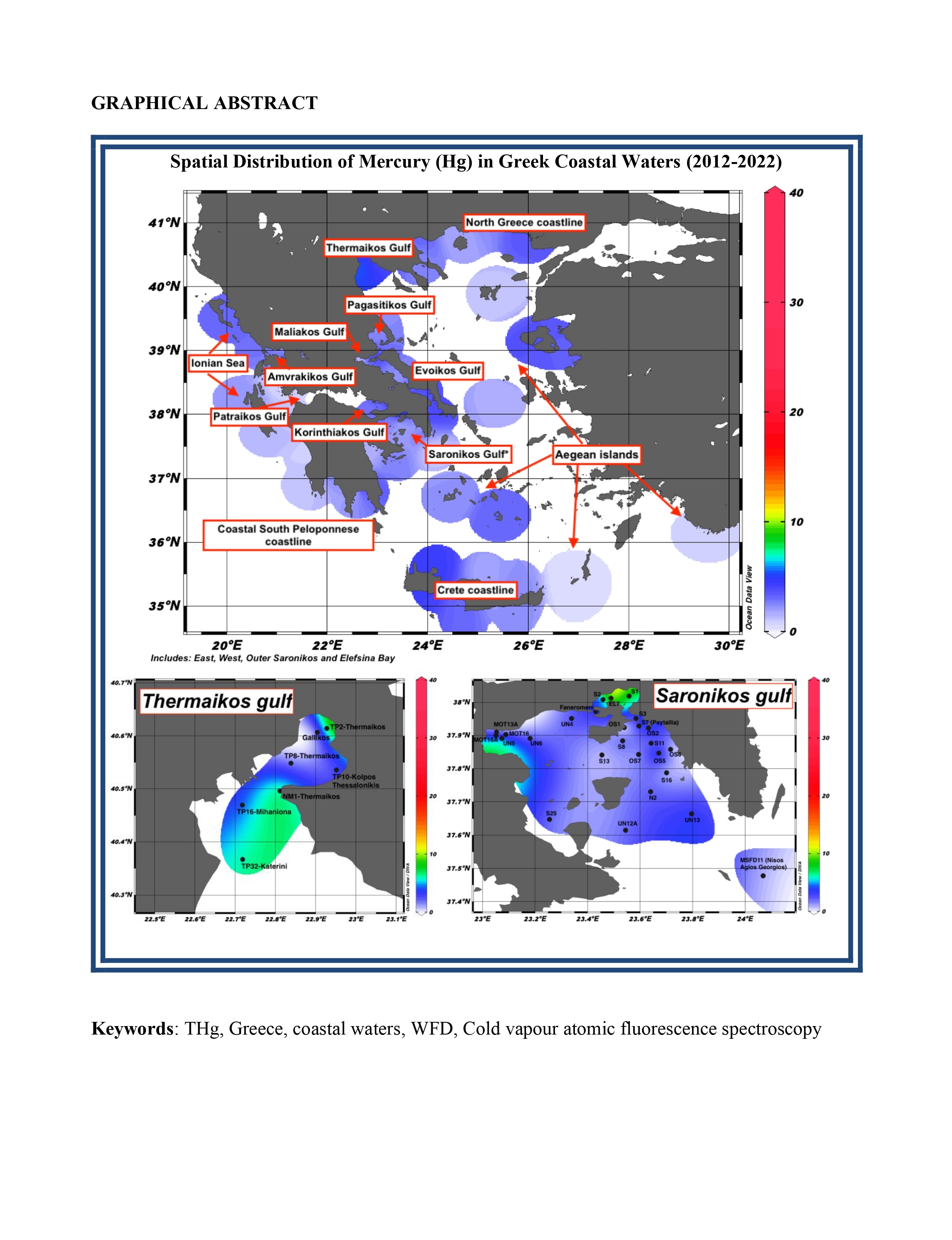
Mercury (Hg) is an environmentally hazardous metal and pollutant in key European legislation pertaining to the marine environment (the Water Framework Directive WFD and the Marine Strategy Framework Directive - MSFD).
Despite the environmental importance of Hg there is limited knowledge on levels in Greek waters.
This paper presents the first attempt to evaluate THg (total Mercury) levels in the coastal waters of Greece in a decade of monitoring (2012-2022) and identify trends and spatial patterns. These results represent the first seawater Hg data reported by Greece under the WFD, highlighting the importance of this work in understanding Hg pollution in Greek coastal waters. The THg levels measured in all areas were well below the European Legislation threshold of 70 ng/L (EC 2013/39). The overall dataset median was 1.65 ng/L. Increased levels of Hg were found, as expected, near the major cities of Greece (Athens, Thessaloniki) and the major rivers of Northern Greece as well as in some of smaller ports (Piraeus, Rafina, Lavrio etc.). The area that stands out as a distinct 'hot spot' is the Saronikos Gulf, particularly Elefsina Bay, where Hg concentrations are significantly elevated.
Total file downloads: 29